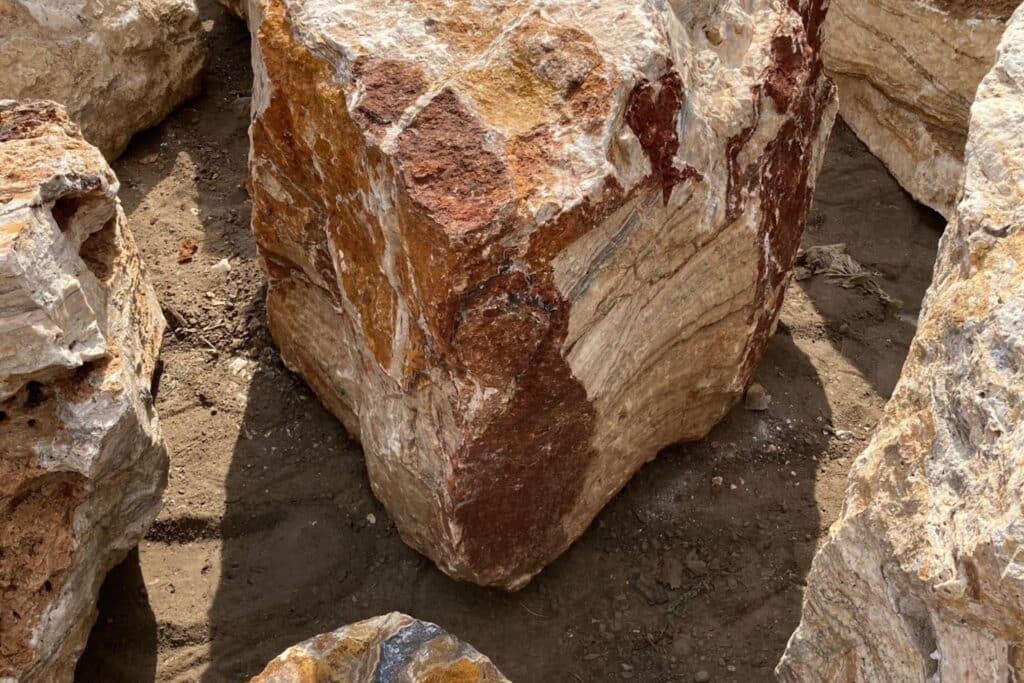
Onyx instantly stands out for its bold bands of color and striking translucence. Unlike more common building stones, onyx is prized for its beauty and dramatic visual presence rather than sheer toughness. Its layered patterns, deep tones, and vivid color with light make it a favorite for decorative features that turn any space into a showpiece. But what type of rock is onyx, and how does it form? Let’s take a closer look.
Onyx is a sedimentary rock, created in caves and other groundwater-rich environments. Over time, mineral-laden water drips and flows through cracks in the earth, depositing layers of calcite and aragonite. These minerals build up slowly, forming the parallel bands that give onyx its defining stripes.
The color bands can range from sharp black and white to warm shades of brown, red, green, and honey. Each slab is a natural work of art, with no two pieces exactly alike. Unlike granite or marble, onyx often forms near the surface in limestone caves, making it a rarer and more delicate stone to quarry.

Onyx is chosen for its unmatched visual appeal.
Because onyx is softer and more fragile than granite or quartzite, it is most often reserved for decorative or accent features where its beauty can truly shine without being subject to heavy wear. One of the most popular applications is in interior design, where backlit countertops, bar tops, and bathroom vanities showcase the stone’s translucent quality. When light passes through, the stone comes alive, highlighting its flowing bands of color and creating an elegant, one-of-a-kind centerpiece.
Onyx is also a striking choice for fireplace surrounds, where its warmth and natural veining can transform an ordinary hearth into a dramatic focal point. Similarly, designers often use large slabs of onyx as wall panels in entryways, dining rooms, or luxury hotel lobbies, turning entire walls into works of art. Beyond architecture, the stone’s fine texture makes it a favorite for sculptors and artisans who carve it into intricate pieces of décor or artwork. Even outdoors, select pieces of onyx can be used sparingly as decorative accents in gardens or landscapes, where their vivid colors and unique banding contrast beautifully with greenery and natural stone.
If you’re looking for a natural stone that’s as much art as it is material, onyx may be the perfect choice. The Rock Garden can help you select from a range of options, offering guidance on how to best use this distinctive stone in your project. Visit us in Fort Collins to explore our stone displays and discover how onyx can bring elegance and artistry to your space.